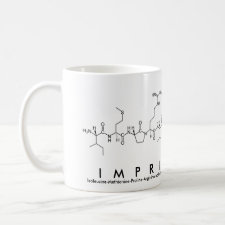
Authors: Ang QY, Zolkeflay MH, Low SC
Article Title: Configuration control on the shape memory stiffness of molecularly imprinted polymer for specific uptake of creatinine.
Publication date: 2016
Journal: Applied Surface Science
Volume: 369
Page numbers: 326-333.
DOI: 10.1016/j.apsusc.2016.02.076
Alternative URL: http://www.sciencedirect.com/science/article/pii/S0169433216302458
Abstract: In this study, sol-gel processing was proposed to prepare a creatinine (Cre)-imprinted molecularly imprinted polymer (MIP). The intermolecular interaction constituted by the cross-linkers, i.e., 2-acrylamido-2-methylpropane-sulfonic acid (AMPS) and aluminium ion (Al3+), was studied and compared in order to form a confined matrix that promises the effectiveness of molecular imprinting. In view of the shape recognition, the hydrogen bonded Cre-AMPS did not demonstrate good recognition of Cre, with Cre binding found only at 5.70 ± 0.15 mg g-1 of MIP. Whilst, MIP cross-linked using Al3+ was able to attain an excellent Cre adsorption capacity of 19.48 ± 0.64 mg g-1 of MIP via the stronger ionic interaction of Cre-Al3+. Based on the Scatchard analysis, a higher Cre concentration in testing solution required greater driving force to resolve the binding resistance of Cre molecules, so as to have a precise Cre binding with shape factor. The molecular recognition ability of Cre-MIP in present work was shape-specific for Cre as compared to its structural analogue, 2-pyrrolidinone (2-pyr), by an ideal selectivity coefficient of 6.57 ± 0.10. In overall, this study has come up with a practical approach on the preparation of MIP for the detection of renal dysfunction by point-of-care Cre testing
Template and target information: creatinine, Cre
Author keywords: molecularly imprinted polymer, creatinine, Intermolecular interaction, Shape recognition, Mass transfer resistance, Driving force



Join the Society for Molecular Imprinting

New items RSS feed
Sign-up for e-mail updates:
Choose between receiving an occasional newsletter or more frequent e-mail alerts.
Click here to go to the sign-up page.
Is your name elemental or peptidic? Enter your name and find out by clicking either of the buttons below!
Other products you may like:
 MIPdatabase
MIPdatabase









